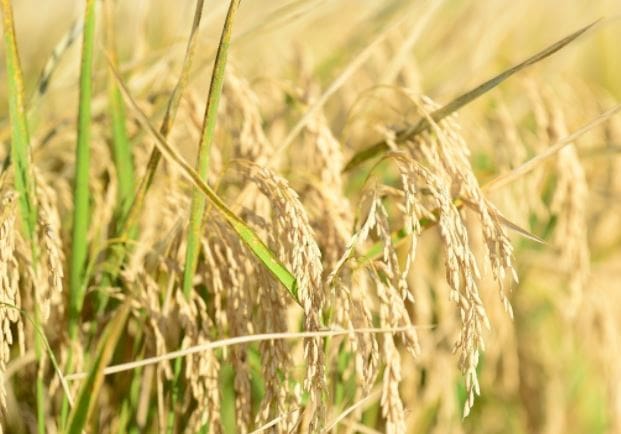RICE consumption around the world is anticipated to continue to grow steadily at around 1.1 per cent per annum to 2025 when it is expected to reach a market volume of 570 million tonnes (Mt), according to a new rice market report published by market research firm IndexBox.
 China and India will remain the world’s leading rice producers and India, Thailand and Vietnam the main rice exporters, while China has emerged as the largest rice importer.
China and India will remain the world’s leading rice producers and India, Thailand and Vietnam the main rice exporters, while China has emerged as the largest rice importer.
In 2016, global rice consumption reached its maximum level (in terms of milled rice weight) of 518Mt, posting modest but robust gains from 2007-2016.
The total consumption volume increased at an average annual rate of +1.4%. Over the period under review, the global rice consumption reached its maximum volume in 2016, and is likely to continue its growth in the immediate term due to Asian population growth.
In 2016, the countries with the highest consumption were China (29pc based on tonnes), India (19pc) and Indonesia (11pc), together comprising 59pc of total consumption.
They were followed by India, Indonesia, Bangladesh, Vietnam, Myanmar, Thailand, Philippines, Brazil and Japan.
From 2007 to 2016, the most notable growth rates of rice consumption among the main consuming countries was attained by Indonesia (+3.0pc per year from 2007 to 2016), Vietnam (+2.9pc per year) and Bangladesh (+1.7pc per year), while the other global leaders indicated relatively stable consumption trend pattern.
The highest levels of rice per capita consumption was registered in Myanmar (306 kilograms per year), Vietnam (285kg per year), Thailand (233kg per year), Bangladesh (229kg per year) and Indonesia (210kg per year), while the average per capita consumption of rice was estimated at 72 kg/year in 2016.
Consumption to reach 570Mt by end of 2025
Rice is a traditional staple food in many countries of the world, especially in Asia, therefore rice consumption is determined by the population needs in food.
Consequently, the world consumption of rice is not subject to strong fluctuations.
In the future, it is expected that due to sustainable growth in population and development of agricultural practices, which improve rice yields and strengthen rice supply, market performance is to continue its mild upward trend.
Rice consumption is to grow with an anticipated CAGR (compound annual growth rate) of +1.1pc for the nine-year period from 2016 to 2025, which is expected to lead the market to a volume of 570M tonnes by the end of 2025.
China and India leading producers
Global rice production amounted to 527M in 2016 (in terms of milled rice weight).
Overall, the rice supply pursued a stable growth from 2007 to 2016.
The countries with the highest levels of production in 2016 were China (148Mt) and India (110Mt), together accounting for 59pc of rice supply.
They were followed by Indonesia, Bangladesh, Vietnam, Thailand, Myanmar, Philippines, Brazil and Japan, which all lagged somewhat behind.
India, Thailand and Vietnam main exporters
In 2016, the volume of global exports totalled 35.6Mt (this figure refers to a sum of semi-milled or wholly milled rice broken rice and husked (brown) rice) which was 12pc less than the year before.
However, from 2007 to 2016, the global rice exports indicated a pronounced growth, with a CAGR of +1.9pc.
India (28pc), Thailand (18pc) and Vietnam (17pc) were the main suppliers of rice in the world, together made up 63pc of global rice exports.
Among these countries, India (+5.2pc per year) and Vietnam (+2.9pc per year) exports steady increased over the period under review, while Thailand milled rice exports dropped by -3.9pc from 2007 to 2016.
The share of India (+7 percentage points) significantly strengthened its position in the global rice exports, while the share of Thailand (-12 percentage points) decreased significantly.
China emerged as largest importer
The volume of global rice imports totalled 26.7Mt in 2016 (in terms of milled rice weight).
Imports dynamics was generally in line with exports: these trade flows globally complement each other.
From 2007 to 2016, global rice imports remained relatively stable, however, indicating some noticeable fluctuations in certain years.
China (13pc of global imports in 2016) was the key rice importer in the world.
Except China, the main importers of rice were Indonesia (5pc), the United Arab Emirates (4pc), Benin (4pc) and Saudi Arabia (4pc), all these countries together made up 17pc share of global rice imports in 2016.
China had the highest growth rates of imports, which accounted for +25.7pc per year from 2007-2016.
The other countries had more moderate growth rates over the same period: Benin (+6.6pc per year) and the United Arab Emirates (+1.9pc per year).
While the share of China rice imports (+11 percentage points) increased significantly, the shares of the other countries remained relatively stable throughout the analysed period.
Source: IndexBox, www.indexbox.co.uk
Grain Central: Get our free daily cropping news straight to your inbox – Click here

HAVE YOUR SAY